The challenge with grades is to find a way to make them valuable as an accurate reflection of the learning and growth that takes place during a child's time with me. So, who should earn an A in art? Grading reflection and growth is important, but it leaves out an important element: how students operate in the classroom. Do they just participate, going through the motions that are expected of them, or do they connect to the work? That connection is what I'm looking for, which is why I'm adding engagement to my grades. I'm defining it as enthusiastic participation in tasks and work. It will be graded weekly and account for around 20% of the final grade. I'll still grade student reflections, but I'm including presenting and conferences with me as additional options. Some students are just blog-averse, which impacts their grades. Kids should write and do all sorts of things, like be on time to and eat their vegetables, but not all of them do. Making all of my students successful is my job and providing a range of choices helps me do that for more of them, so expanding options for reflection makes sense. Between providing choices for reflection and grading engagement I hope to come up with grades that truly capture the learning that's happening in my classroom. To earn an A, students should be invested in learning and participate with commitment. They should also be able to analyze what they've learned through the art-making process and share the work they've created. I'd like my class to be about making art for art's sake; hopefully this new grading process helps me get closer to that ideal.
0 Comments
Learning new things is hard. So is teaching them. I want my students to master foundational knowledge so they can make independent choices about what to make and how to do it, but things get in the way: my kids have a huge range of prior knowledge and they learn new information at different rates. Plus, some are enthusiastic and motivated, while others seem uncomfortable or disengaged. The solution for this - group work. When I teach new skills I use the Gradual Release Model, which I've written about here and here. The step that I most often skip is "you do together", which I realize more and more is exactly the wrong approach. Giving students the opportunity to apply new skills with the support of others helps everyone acquire new knowledge quickly - which get us to more student choice quickly and successfully. I started my Art 1 Bootcamp yesterday with value. Normally I teach this by demonstrating, then having kids practice. This time I demonstrated and had students draw along with me or just watch, depending on learning preference. Next we formed groups of 3 and used the base of the classroom stools to trace a big circle form for them to shade together. The conversations were great. "Okay guys, where are we going to put the highlight?" "Do you think this is a good shape for the cast shadow?" "Dude, don't forget the reflected light, didn't you listen?" The knowledge learned through these types of conversation is so important for learning. Talking through a task with a group clears up any misunderstandings, builds vocabulary and cements new learning. This short experience will give them information they need to be successful with the more student-directed drawing experience that will end this section of the bootcamp. Like my blog? Vote for me, "Thoughts on Arting",/ in Art of Ed's Blog of the year contest!
Ah, a fresh, new semester with no mistakes in it. I'm looking forward to meeting my new students on Wednesday and I'm excited about what I have planned. I'm starting Art 2 off with a re-imagined unit I'll call "Artists Learn" where we'll be focusing on the figure and portraiture. I did portraiture with Art 2 last year, and I was happy with the results, but the lesson was kind of..........boring. This year I want to examine the figure from a few different contexts and get out of the classroom. I'm inspired by Swoon's delicate figures and Tatyana Fazializadeh's campaign to end street harassment. Both artists use wheat paste to display their work publicly - how fun would that be? We'll start by learning figure proportions, then work in groups to apply learning by making some Dan Botlek inspired figures to scamper around campus. We'll practice drawing facial features, maybe make a portrait inspired by T.S. Abe. We'll finish the unit with an open-ended summative project where students will be asked to apply what they've learned about portraits and the figure. Lots of group work, increasing levels of choice, taking inspiration from current artists - these are my semester goals. Oh - and if you like my blog vote for me for AOE's secondary blog of the year!! My relationship with student blog posts started as all positive. I loved reading student's reflections on process and looking at images of their artistic journey. I based a huge chunk of my grades on these posts, which made total sense: the questions I asked students to write about were growth-oriented and related to the development of conceptual thinking. It seemed perfect, until I noticed it wasn't. At least not for everyone. The first thing I noticed was that blogging wasn't the best fit for all my students - especially those with special needs (IEP official and otherwise). Writing, photographing and posting was a barrier to some of these students, so I modified assignments on an individual basis. Next I noticed that some students just seemed blog-adverse. When I questioned them about their very apparent lack of timely blogging they said things like: "We have to write in every other class." "I hate doing blogs." "I just forget about it." Whiners, I thought. They're just being lazy. Then I really thought about it and I decided this; what I value in blog posts isn't the physical product, it's the thinking. I realized that some other form of reflection might work better for my students, so I decided to look for a range of reflection options. I came up with two: conferences and presentations. I've tried both over the course of first semester. Both types have the same content as blog post but are public to different degrees. I've asked students to present by sharing their work in front of the class or with their table groups. What I like about these options is that they provide the student with immediate feedback from me and from their peers. The reflection about the work unfolds organically, through the give and take of conversation and it benefits everyone in the group, not just the artist. I'm also able to grade them as they happen, which is nice. Conferences are similar, but just involve me and the student. I like conferences because they're very personal, which is very conducive to sharing meaningful feedback and getting to know students better. The main thing I've learned by opening up reflection in my classroom is something I already knew; choice is inclusive. My students responded positively to being given a choice about how to present their learning and are able to pick what works best for them. Blogs are a great option for reflection but having other choices available in addition is what I'll do in the future.
The new year always makes me feel reflective, and this year is no different. I've been thinking about my first semester Art 1 courses and I've come up with three important lessons. 1. Give students a platform to advocate.One of my biggest successes this year was my new unit called "Artists Take a Stand". It was all about advocating for issues and I was shocked by what a perfect fit this was for my students, after they're set up for success. They seemed to have way more knowledge about world events and social justice issues than I did at that age. After talking to them the reason became very clear - Twitter. Teen's connection to the world via social media makes them very broadly (but not deeply) informed. Using this knowledge as a starting point for art is a great fit. Below are artwork about the California forest fires, the recent shooting at an abortion clinic and the issue of concealed carry. 2. Use collaboration.Collaboration is a powerful learning tool because it harnesses the power of group thinking. I use it to help students develop ideas during the introduction to a project and as a teaching technique during bootcamps. I've also been experimenting with using it during critiques in "Critique Games" where groups of students collaboratively analyze each other's artwork. They talk, examine ideas and interact in an informal way that I love. I also love organic collaboration - the "Mrs. Purtee, can we work together?" kind, not the assigned type. I suggest working together on projects often but I never force it. Pictured below: spray paint collaboration, critique game drawing and a group foot painting for my Artists Explore unit. 3. It's Replicable.
|
Mrs. PurteeI'm interested in creating a student student centered space for my high school students through choice and abundant opportunity for self expression. I'm also a writer for SchoolArts co-author of The Open Art Room. Archives
December 2019
Categories
All
|
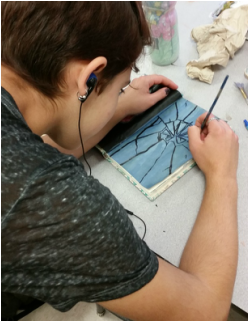
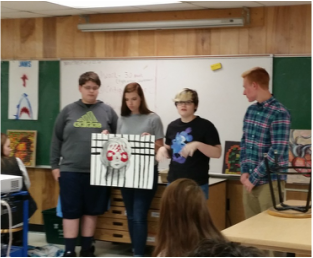
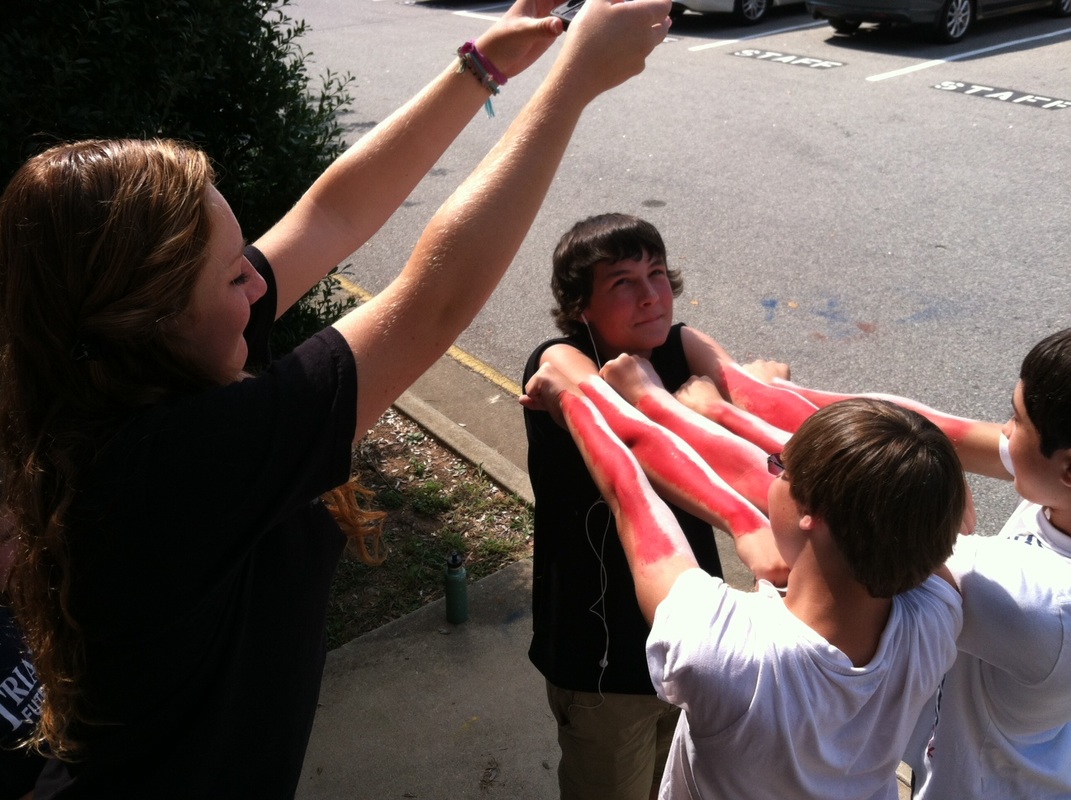
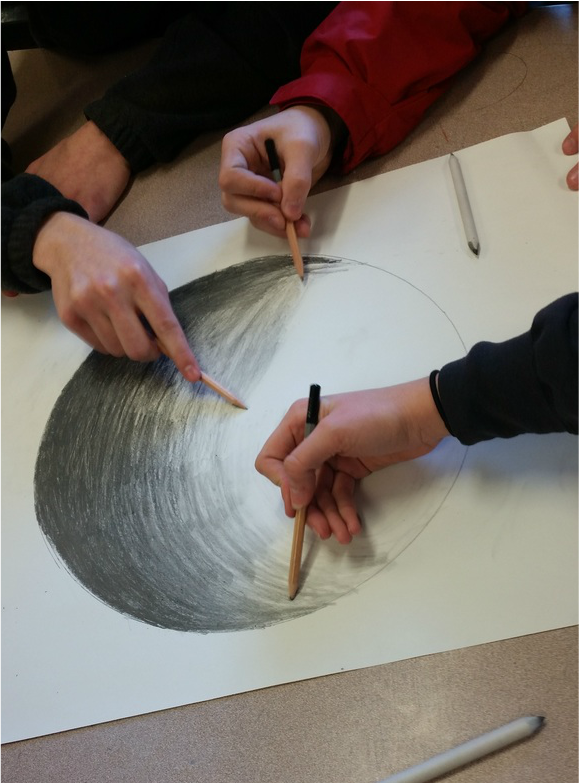
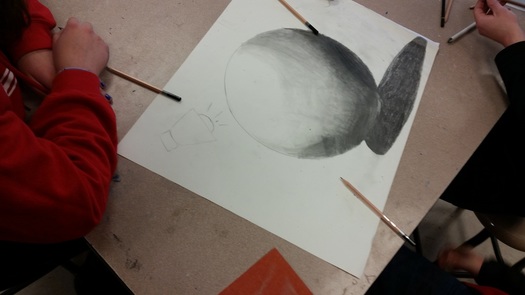
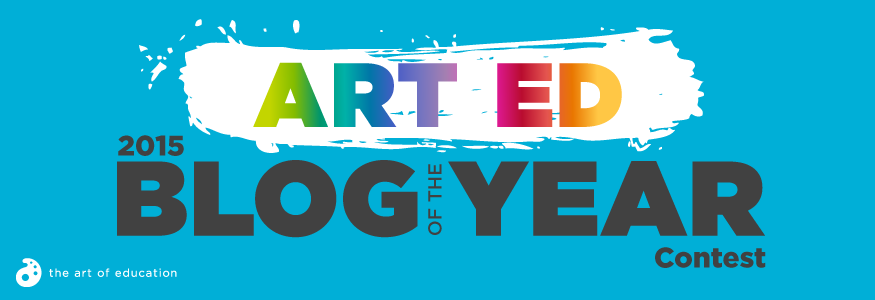
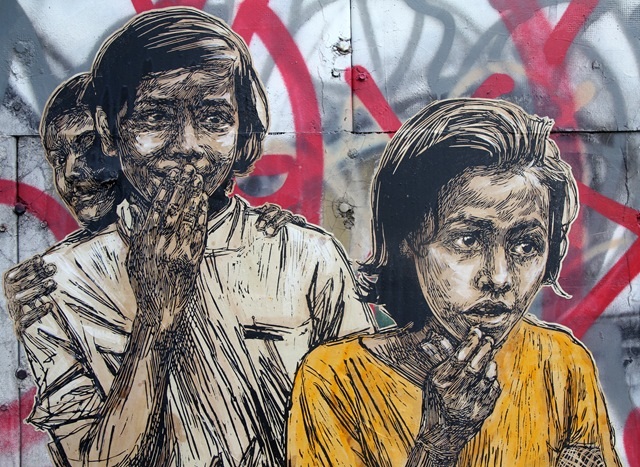
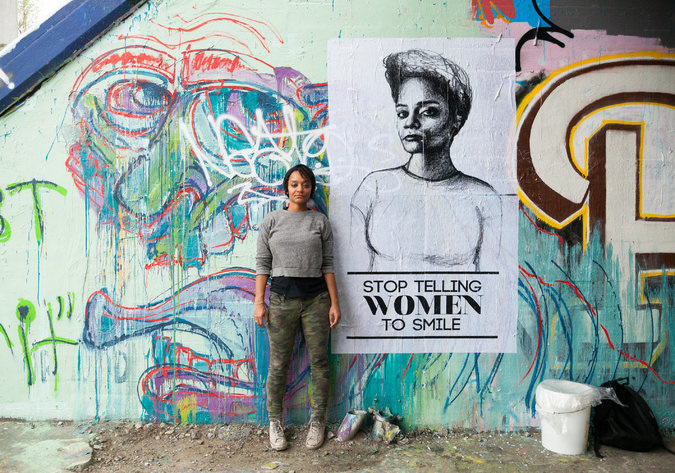
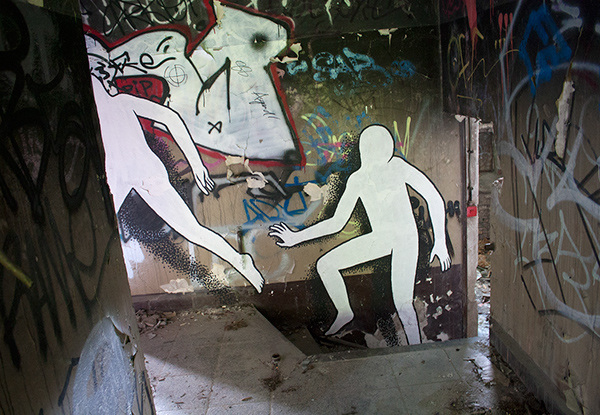
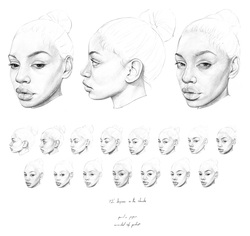
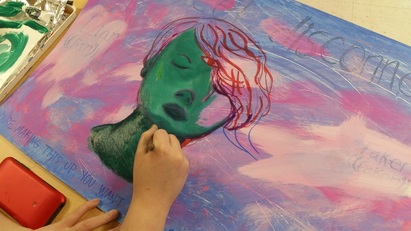
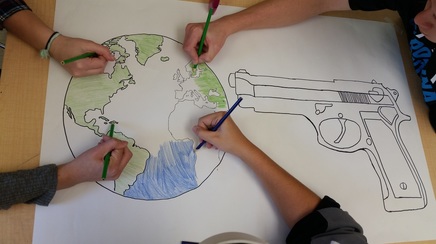
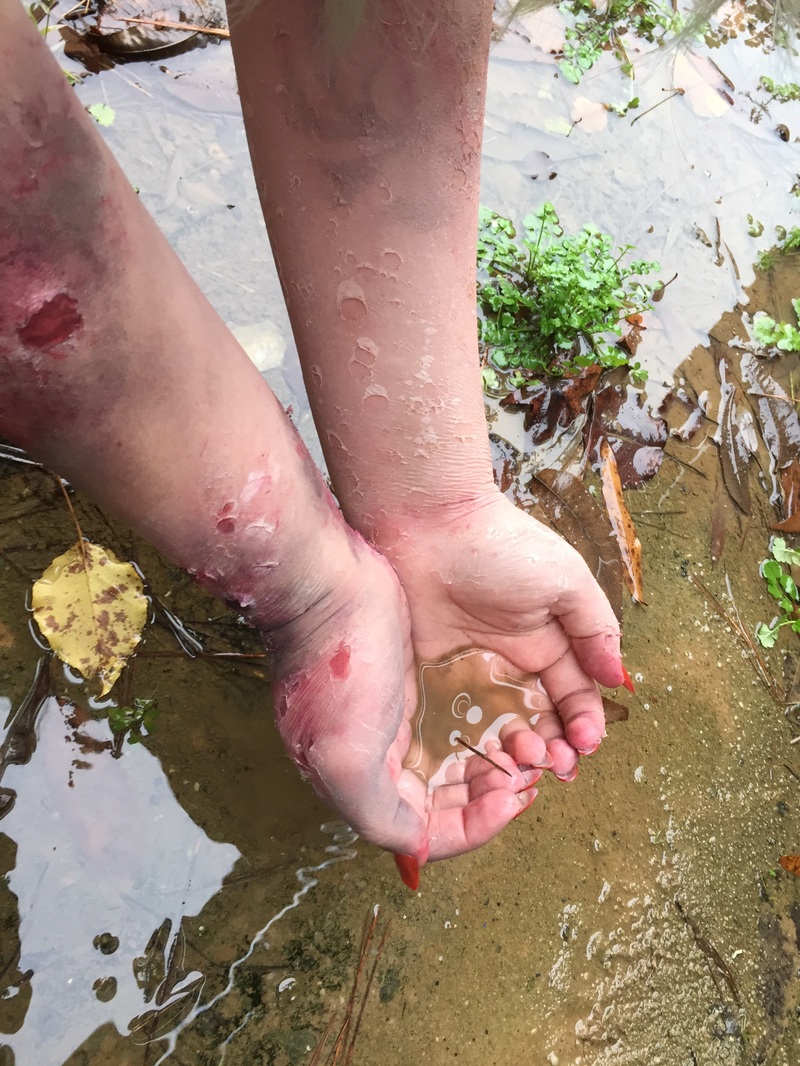
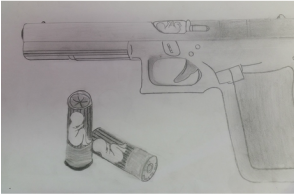
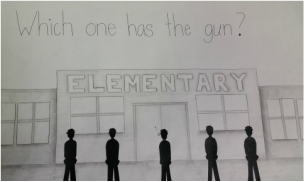
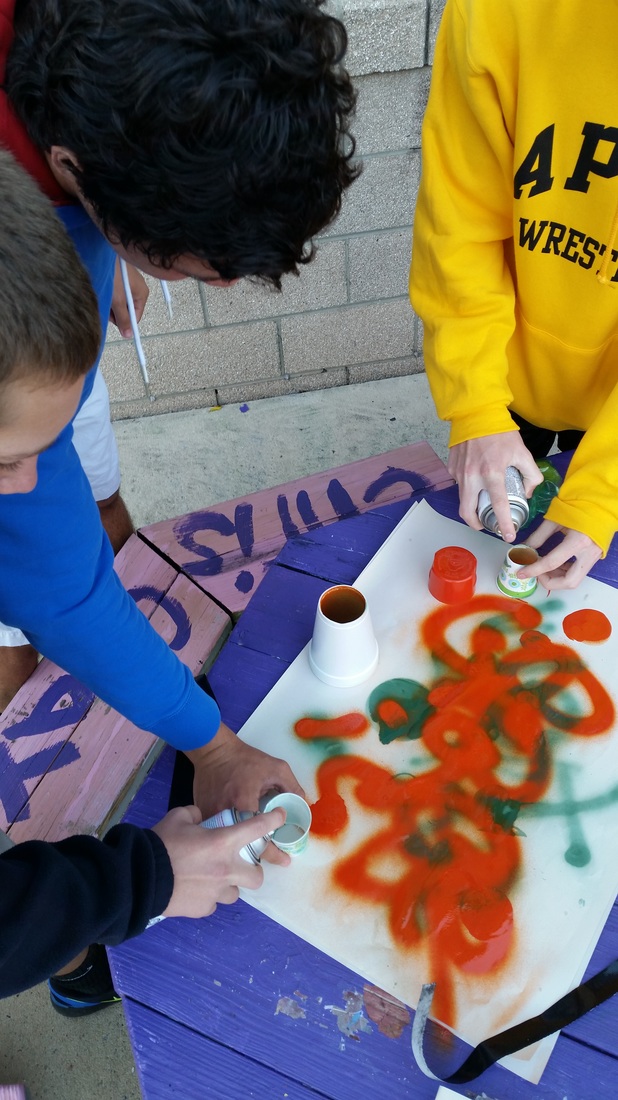
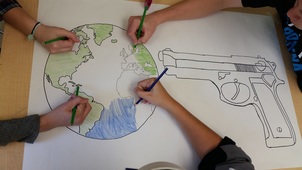
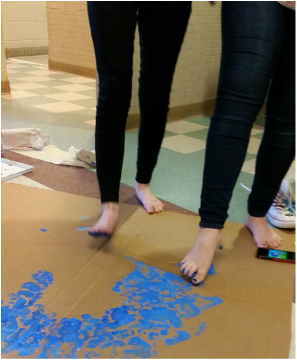
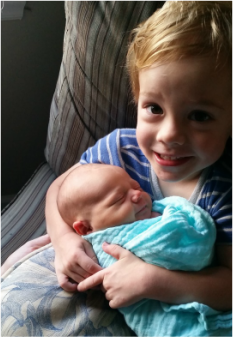
 RSS Feed
RSS Feed
